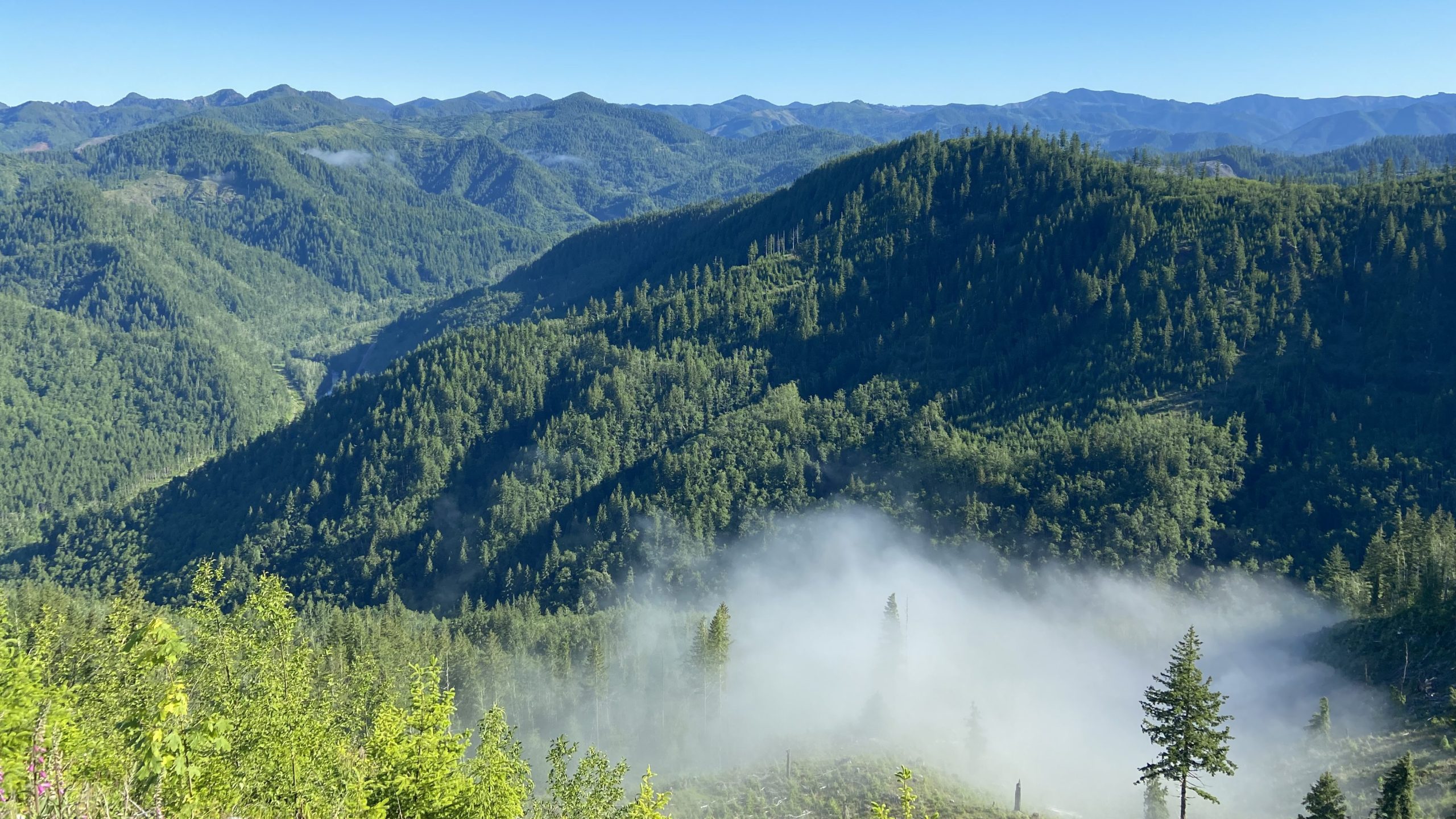
State Forest History
Of Oregon’s 30 million acres of forest, approximately 745,000 acres are owned and managed by the state. Over 600,000 of those acres are known as Forest Trust Lands. In the 1930s, 15 counties entered into an agreement with the state that conveyed ownership and management of 613,000 acres of county forestland to the Oregon Department of Forestry. In exchange, ODF agreed to actively manage those Forest Trust Lands and return 64 percent of the revenues produced from timber harvest to the counties, with the state retaining the remaining 36 percent as a management fee. The counties then distribute the money received to taxing districts within the county, benefiting organizations like 4-H, fire departments, community colleges, healthcare centers, emergency response, libraries, recreation centers, and K-12 school districts.
For decades, timber harvest on state forests have not only been an important source of revenue for the Department, Forest Trust Land counties and the taxing districts, but have also been a source of critical economic stability for rural communities. It is estimated for every dollar ODF collects from timber harvest, at least one more dollar is generated for local small businesses through logging, hauling, road building, mill wages, trucking and logistics. Research by the Oregon Forest Resources Institute found 11 jobs are created in Oregon for every million board foot of timber harvested.
Over the past decade, ODF has increasingly prioritized conservation values over economic and social considerations. This has led to declining revenues for the counties and the state, threatening the viability of mill infrastructure and economic vitality in rural Oregon.
Habitat Conservation Plan (HCP)
In the hopes of improving both conservation and economic outcomes on state forestlands, ODF is developing a 70-year Habitat Conservation Plan (HCP) with the U.S. Fish and Wildlife Service and the National Oceanic and Atmospheric Administration. An HCP is a voluntary plan or agreement available to landowners under the federal Endangered Species Act to protect wildlife species and the ecosystems on which they depend. It is intended to ensure landowners operational flexibility and assurances while providing for the needs of fish and wildlife.
Unfortunately, the plan has largely been developed behind closed doors with little stakeholder or Trust Land Counties’ involvement. Despite concerns voiced at every step of the process by the Forest Trust Land Counties, taxing districts and forest products businesses, the Department is years into development of a single, overly restrictive HCP that will convert over 55 percent of the state’s productive working forestland into a wildlife preserve – even though this approach hasn’t worked in the past to recover species like the northern spotted owl. Forest harvests are projected to drop 25-30 percent from current levels. The Department’s HCP unnecessarily limits management on more acres than other HCPs on the west coast. In addition, with the HCP’s reduced harvests and timber revenues, the Department would find itself operating at a deficit. Taxpayer dollars – up to $30 million per biennium – would be needed to subsidize their operating budget.
Unless the Department changes course, Oregon’s state forests will go the way of the state’s federal forests – becoming unmanaged, overstocked forests infested with insects and disease, further contributing to the state’s wildfire crisis while worsening timber-dependent rural counties’ ability to provide essential services and sentencing those communities to economic decline.
For more information, please visit the State Forest Community Action Network.
